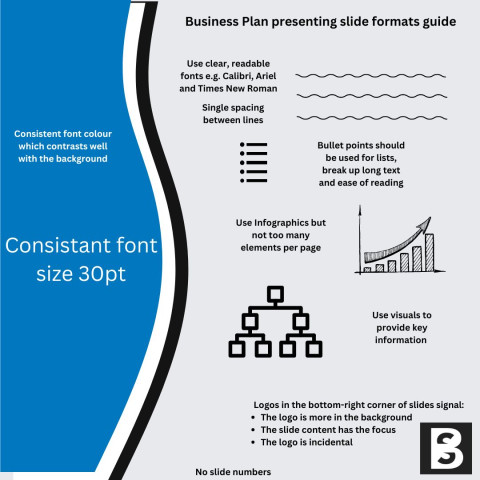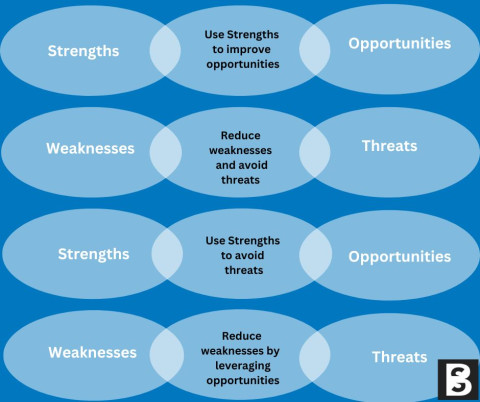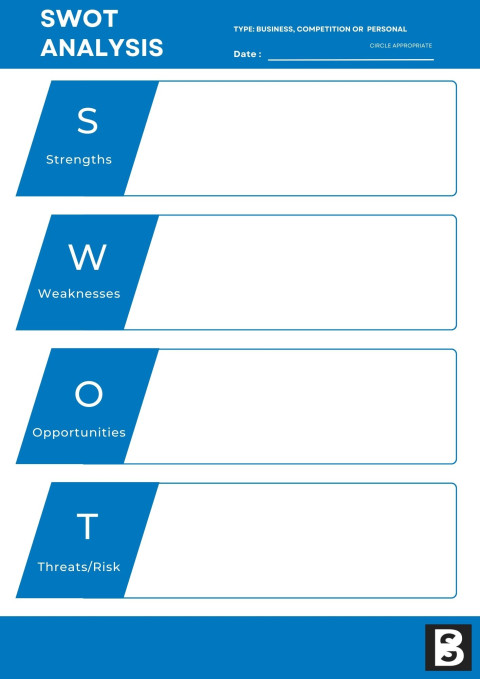Business Plans - Comprehensive Guide Part 2
What are the different types of Business Plans and how to carry out a SWOT analysis. Business Plans can vary from traditional detailed plans used to secure funding to Lean plans designed for internal management, each tailored to specific needs and goals. Incorporating a SWOT analysis (Strengths, Weaknesses, Opportunities, and Threats) provides a strategic framework for identifying intern and external factors that can impact the business. This combination ensures that the business has a clear roadmap for growth, is prepared for potential challenges, and can capitalise on opportunities effectively.
1. What is a Business Plan?
A Business Plan is a multi-functional living document that changes as your Business develops.
It outlines and defines what your Business does, what is special about it, what your goals are and how you are going to achieve them.
Writing a Business Plan maps your vision for the future and gives you a chance to pause and really think about what you want to achieve and how, before you are fully committed.
Whether a Start-up or existing business looking to grow, banks and potential investors are extremely unlikely to fund a business without a comprehensive Business Plan. They need to know that you are a good investment and what their returns will be. They want evidence that you have the ability and knowledge to make your Business a success. It confirms that you are organised and have objectively assessed your business ideas, that you are serious about your Business Plan and helps differentiate you from others, enabling an efficient and fair analysis of your proposal.
a. Benefits of a Business Plan
- Provides a structured way of organising your thoughts and clarifying your ideas
- Develop your ideas and easily identify gaps where more development is required
- Provide focus and direction identifying the high priorities to be focussed on
- Ability to monitor and measure the progress of your Business and stay on track
- If you have business partners or employees involving them in this planning process helps build a successful and committed team and ensures you are all working towards the same vision
- Clearly define your goals, objectives and expectations and any potential challenges in achieving these
- Gives you a clear, positive strategy and plan for the future, particularly when things get busy
- Is often essential for securing external finance for your Business (and is required if you’re applying for a Start-Up Loan).
2. Business Plan Types
Here we look at the main types of Business Plans, their results are similar but each requires a different amount of work to compile. The size of the plan and its quantity doesn’t guarantee which is superior. Success depends on creating the right plan for the right audience and setting.
Here we look at the main types of Business Plans, their results are similar but each requires a different amount of work to compile. The size of the plan and its quantity doesn’t guarantee which is superior. Success depends on creating the right plan for the right audience and setting.
All businesses should have a Business Plan and keep it regularly updated, particularly if they want to grow and raise funds.
a. Feasibility Plan
Are you looking to introduce a current product into new markets or a new product or service into an existing market?
Before putting pen to paper or your fingers on a keyboard, create a Feasibility Business Plan to determine:
- Who will buy your product or service?
- Will your Business concept make a profit?
Include in your plan:
- A description of your product or service
- Marketing analysis showing the target customers and locations
- ROI figures (Return on Investment)
- Funding requirements
- End with recommendations to move forward
b. Miniplan
A Miniplan, or One-page plan, contains all the same components of a full Business Plan, but only details the most important highlights.
Focus on the strengths of your Business, providing greater details for these sections.
It is a great starting point for writing your full Business Plan, it enables you to later expand and elaborate on the highlights.
This is a good exercise on communicating your Business idea concisely. Limit each section to 3-4 bullet points or 1-2 sentences. Use font size 11 or 12 and only on one page.
c. The Presentation Plan or Deck Plan
Whether you have a full Business Plan or a Mini Plan, creating and presenting your Business Plan electronically is a powerful tool. It enables you to share your Business passion and knowledge in a succinct and visually appealing way.
Whilst your presentation will be much more concise than the full version don’t underestimate the amount of planning required. Being concise is an art. The pivotal 5 W's and 1 H will need to be answered, Who, What, Where, Why, When and How.
The objective of your presentation is to convince others that they need your product or service and that your Business is worth investing money, time and resources, therefore you MUST engage them.
Title page
Introduce yourself, people want to know if the person they are looking to invest, work with, supply to or buy from is personable. Tell them what inspires you, how you got into this industry and your goals.

Presentation format
- Where possible use a template or you can fall down the rabbit hole of design
- Don’t use too many slides, the length is usually 10 to 12
- Keep text to an absolute minimum, if you need more room for text, make another slide or cut the text down
- Keep transitions to an absolute minimum
- Use your notes to stay on topic, not the slides
- Don’t read out the slide, your audience can read them for themselves
- Test that you can see the presentation from a distance, the viewers at the back want to read it too

Infographics
Infographics (a visual representation of information and data) are key in your presentation.
They are a very effective method in enabling your audience to understand complex concepts.
Video is now classified as an Infographic. The careful inclusion of video can turn your Business Plan into a memorable, differentiating proposal. To add emotion to your presentation, add a video of you giving a brief introduction of your company's vision, your products in action or your team at work.
d. Start-Up Plan
The Start-Up Business Plan’s details the steps to get your Business idea into production and/or receive funding from investors. At this point a lot of the information included will be forecast based so it is important to sell yourself. Kept updated it is a useful tool as your Company grows.
e. Internal Plan
Internal Business Plans, also known as Lean Plans, are created to evaluate a proposed project, within a specified audience, in an existing business. Calculations on what funding is required and how it will be repaid are balanced against the current state of the business. The content included is dependent upon the project requirements and business audience.
As this is an internal document, detailed information about yourself, the management team and product photos will not be required.
f. Operations Working Plan
An Operations Working Plan can be created for internal or external use and is very detailed. It focuses on the day-to-day operational activities of the business. It can also be used to quantify an increase in budgets, usually on an annual basis. It states the implementation goals and deadlines for the coming year.
It includes the responsibilities of the management team, employees, and departments and how they will all contribute to the overall success of the business.
g. Growth Plans
Growth plans, or Expansion Plans, are detailed descriptions of proposed growth of an existing business.
They can be created for internal or external use and therefore contain different information.
External Growth Plans
External Growth Plans include detailed content to gain external investment for growth. This could relate to financial investment, new products, recruitment of new employees or materials.
To determine the level of detail required for each section assume that the external investor or bank has no information about your Company.
Internal Growth Plans
When a business uses its own revenue for growth, an Internal Growth Plan is required.
The business and product or service information does not need to be as detailed as with the External Plan.
h. Strategic Plan
Strategic Plans are usually internal and used by larger enterprises, whereby teams of senior management and possibly external consultants develop high-level strategies for the Business.
It provides a high-level view of the Company’s goals and how to achieve them. The plan is inclusive of the whole Company, engaging all levels of the business in the plan and inspiring everyone to collectively work towards and achieve the goals.
Frequently a SWOT analysis is carried out by management, to identify the areas of Strength, Weakness, Opportunities and Threats in the business, creating a greater awareness of the factors that affect business decisions. The results help determine which strategies will be the most effective to implement.
The chosen strategies are then detailed, moving the Company closer to its goals. It may include recommendations for allocating resources and key dates for the completion of various proposals.
It is important for any business to funnel their resources to areas that will produce the largest benefits by identifying what your company does well then play to these strengths and select the right opportunities.
2. SWOT analysis
A SWOT analysis helps you objectively understand your idea, your Business, and your overall aims, therefore you must be honest.
It can be used for planning at the business ideas stage, at the organisational level and can be used at a departmental level.
Strengths and Weaknesses are internal factors that affect the success of your Business, while Opportunities and Threats are external factors affecting your success.
Think about your future success, where do you intend to be in 3 years’ time?
Strengths
What do you have that gives you a competitive advantage over others?
Weaknesses
Characteristics that place your Business at a disadvantage to others?
Opportunities
Positive risks that have potential to drive your Business forward
Threats
Negative risks that have the potential to affect your Business in a negative way

a. Print this SWOT template
Analyse the results:
- How can you use your Strengths to improve Opportunities?
- How can you reduce Weaknesses and avoid Threats?
- How can you use your Strengths to avoid Threats?
- How can you reduce your Weaknesses by leveraging Opportunities?
It is a good idea to carry out a SWOT analysis for your competitors too. Use it to identify how you can be more successful and win business from them.
Carrying out a personal SWOT will give you an overview of how and where your experience relates to your Business.
Perhaps you’ve worked in a similar type of business or have run another business, what training have you completed and don’t forget your life experience skills. These transferable skills can put you in a better position and give you confidence when starting a new business.
Understanding the different types of Business Plans allows for tailored approaches to funding, management, and growth strategies. Meanwhile, conducting a SWOT analysis provides valuable insights into the business’s internal strengths and weaknesses, as well as external opportunities and threats. Together, these components create a robust framework for informed decision-making, effective resource allocation, and long-term success.
To view the other articles in this series follow this link: https://bespokeuk.com/post-cat...

Mailchimp Alternatives Guide 2025
Is Mailchimp still the best FOR EMAIL MARKETING? Or are UK businesses find...
5 min read

The Hidden Cost of Poor System Integration
Why Poor Integration Between Systems Is Holding Your Business Back And How...
8 min read

Admin Overload: The Silent Business Killer
The cost of manual, repetitive admin tasks In countless small and medium-s...
3 min read



